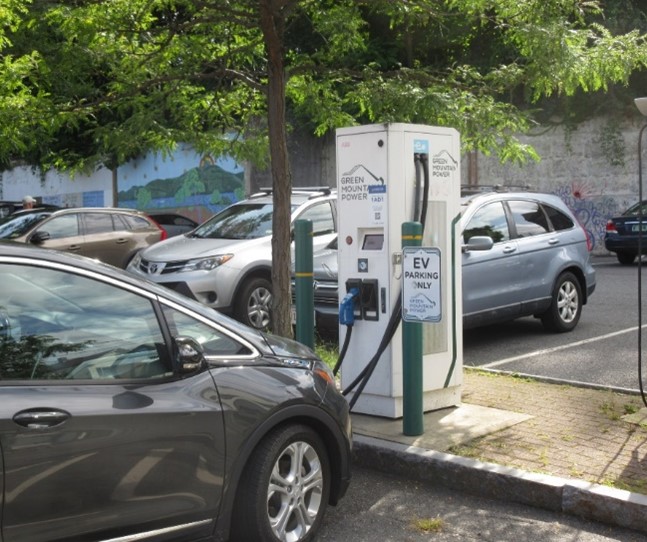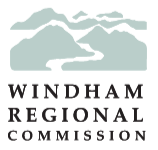Transportation
Energy and Transportation
The rural, largely dispersed character of the Windham Region causes residents to travel longer distances and be more dependent on personal vehicles than other more urbanized states. Addressing car dependence through improved transit and multi modal connectivity is an important step in reducing emissions and energy consumption. However, given the rural character of the area it is likely that cars will remain the primary mode of transportation for the foreseeable future. Reducing emissions through the adoption of low and no emissions vehicles is therefore is an important step towards improving the efficiency and sustainability and reducing the negative environmental impact of our transportation system.
Transportation is a major contributor to the state’s overall energy consumption and greenhouse gas emissions. As of 2021, transportation accounted for 34% of total energy consumption and 40% of GHG emissions in Vermont. The most recent data from the Federal Highway Administration shows that while Vermont produces approximately 20% less per capita emissions than the national average, the State lags behind the rest of New England in reducing the transportation sector’s carbon footprint. Reducing both annual vehicle miles travelled through land use planning for compact settlement and improved multi modal transportation infrastructure, as well reducing carbon emissions per vehicle mile by promoting the adoption of low and no emissions vehicles, are critical steps in reducing the overall carbon footprint of the transportation sector in the Windham Region.
In 2022, the State of Vermont adopted new standards for low and no emissions vehicles, generally known as the ‘California Emissions Standards’. The transition to low and no emission vehicles in Vermont will require extensive planning and policy implementation efforts at the State, Regional and Local level. Currently, 98% of the total vehicle fleet in Vermont, equal to 591,273 registered vehicles, are classified as light-duty gasoline vehicles. In comparison there are 8,875 electric vehicles, representing only 1.5% of the overall fleet, as of 2022.
Specific goals and implementation strategies for climate and energy resiliency in Vermont are outlined in detail in the 2022 Statewide Comprehensive Energy Plan and the 2021 Climate Action Plan. While these goals are discussed in more detail in the Energy Section of the Windham Regional Plan, improvements in the transportation sector are of particular importance to meeting these statewide goals.
As the number of hybrid, electric, hydrogen, and other alternative fuel vehicles as a proportion of the total personal vehicle fleet rises, improvements are needed to ensure the infrastructure in our region is capable of meeting the needs of an increasingly diverse vehicle fleet. This includes expanding electric vehicle charging infrastructure, both in private homes and in public spaces, as well as ensuring fueling stations are available for hydrogen cell vehicles. Charging and fueling stations should be conveniently located, and easily accessible from all major transportation corridors in the region.

Photo Credit: WRC
Electric vehicle charging infrastructure is particularly important in our town and village centers, as well as resort areas. The age of housing stock in Vermont represents a challenge to expanding private electric vehicle charging infrastructure. Older homes, particularly those built before 1950, represent a disproportionately larger share of the overall housing market in Vermont than in the United States as a whole. Costs to incorporate electric vehicle charging into historic homes are substantially higher than to build that same infrastructure into new development and this is a major challenge to implementation of the California emissions standards in Vermont.
Downtowns and village centers are centrally located destinations where people can fuel their low or no emissions vehicle while taking advantage of the commercial and cultural amenities those areas provide. This is a more attractive proposition than sitting at a rest area off of the highway waiting for your vehicle to charge. To this point, resort centers have not been prioritized for funding for public vehicle charging infrastructure and the current infrastructure is inadequate to meet the needs of the region, particularly during the busy winter months. Expanding charging and fueling stations for low and no emissions vehicles in resort centers is important to meet those demands and bolster the tourism economy.
Additional strategies to reduce emissions in the Windham Region include promoting greater use and efficiency of public transportation, promoting the adoption electric bicycles, and increasing the number and usage of park and ride lots in the region to encourage carpooling.
